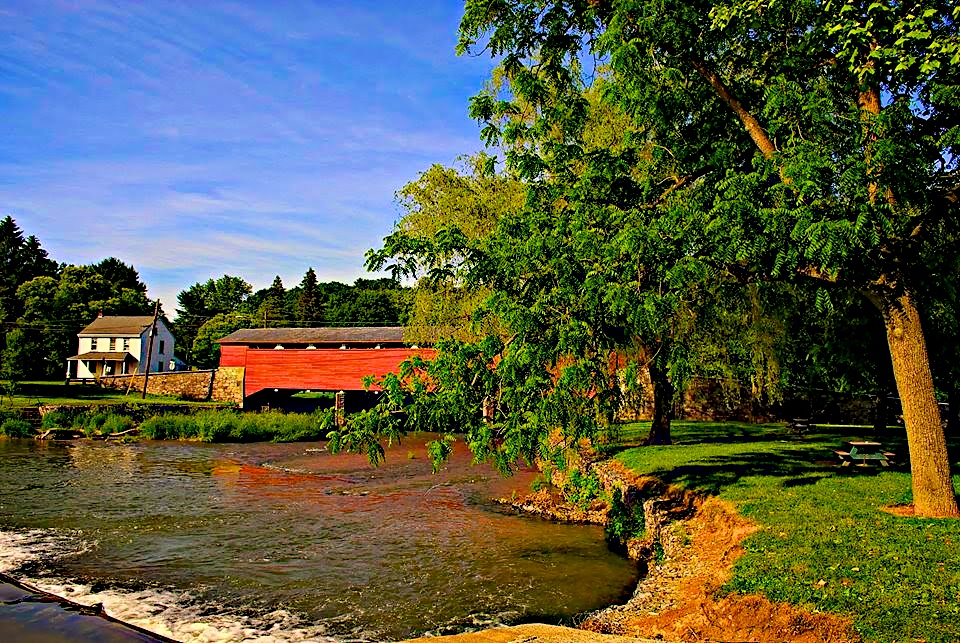I wanted to write today about the good news. One of the core proponents to save the historic building wrote a nice post on the Save King George FB. It’s better then what I would have written, so I thought I’d just re-post below.
Couple of thoughts first. Total team effort led by a tireless core. Activists including our LMT historical society, local residents & officials and most crucially the developer. Sincerely can’t thank Mr. Patel enough.
Having been immersed in a grass roots resident driven effort before but sadly the disappointing end, it’s great to see residents score victory. I hope the group stays active. When we fought the Jaindl rezoning we made a Facebook page. The “Friends LMT” page was created to raise awareness of the 2010 decision to rezone 700 acres of farmland but still lives on as a smart growth watchdog despite the outcome. During the height of the Jaindl issue the “Friends” group had 400 followers. Today it’s near 1000. We kept the inertia deciding to make the best of it by keeping residents informed of future issues. We hope never again will residents be blindsided by a decision with such wide reaching impact without the chance to weigh in.
I hope Save the King George inertia also remains as a watchdog and proponent for other historical preservation projects. They succeeded in raising awareness to the point where the developer and local officials had no choice but to hear the valid arguments of preservation. For now the group deserves a victory lap, a huge pat on the back and many thanks for their efforts.
Saving the King George Inn:
Using Social Media and Technology for Awareness
By Dean K. Ziegler
As with any hard fought victory, now is the time to savor and reflect. I am amazed at how the nuances of local government came to life with this issue, and what methods were used to accomplish our goals. First, there was no substitute for hard work, networking, and involvement from a core group of people with similar interests. Without this, the outcome would have been very different, I am sure. Countless meetings, both public and private, with elected officials is what got the job done. But, without social media sites, like Facebook, and modern communication technology, I doubt the awareness of the King George Inn situation would have happened on the magnitude that it did.
I first saw the news on a Facebook post. Someone had commented on a post of what a shame it was to have the King George Inn demolished for developmental purposes. My incredibility and perhaps ignorance made me comment that the current owner would never let that happen! Being publically corrected made me realize what was going on. The King George Inn had not only been sold, but was scheduled to be demolished. My next thought was how was this injustice going to be corrected? With that in mind, myself and a few other Lehigh Valley residents started this journey of local government intervention.
Facebook let us put out feelers as to who was organizing what in order to save the King George Inn. A brief meeting at the Lehigh Historical Society gave us the inspiration that we needed. Nancy Lloyd and Susan McDermott chaired the meeting, as well as a representative from another historical organization. The events that needed to happen seemed a bit intimidating. We could either convince the proposed owner not to demolish, find another buyer, or have local government officials step in. Our work was cut out for us.
I started the MoveOn.org petition in hopes of showing our local politicians that our tight knit group was not a fluke. Within several weeks, we had over 1,500 online petition signatures, and you can bet we used this fact in our presentations, first to the South Whitehall Township Commissioners, and then to the Lehigh County Commissioners. The number of signatures later swelled to over 2,000. Every single one of them was in touch with us by e-mail, courtesy of MoveOn.org’s protocols.
After the petition was started, we formed the Save the King George Inn Facebook site. This was invaluable for notifying the public about what was going on, sharing newspaper articles, and hopefully, some recognition by the affected politicians that we were not a group that would go away quietly. McDermott and Lloyd, and a host of others sent a flurry of e-mails to everyone. We received countless suggestions from non-affected politicians, retired government officials, and even the builder who completed a very similar project of utilizing an existing historical structure for commercial purposes.
By being proactive with the newspaper reporters, several key points were included in their coverage. Of course, we cannot claim that we swayed anyone’s writing or opinions. But, little by little, I feel that not only did the politicians grasp what our movement was about, they also had a pulse on public opinion.
I wish Mr. Patel the best of luck in his commercial endeavors. I am satisfied to write that even if it seems that public opinion is just a little cog in the wheel of society, once in awhile it plays a significant role in our community.




